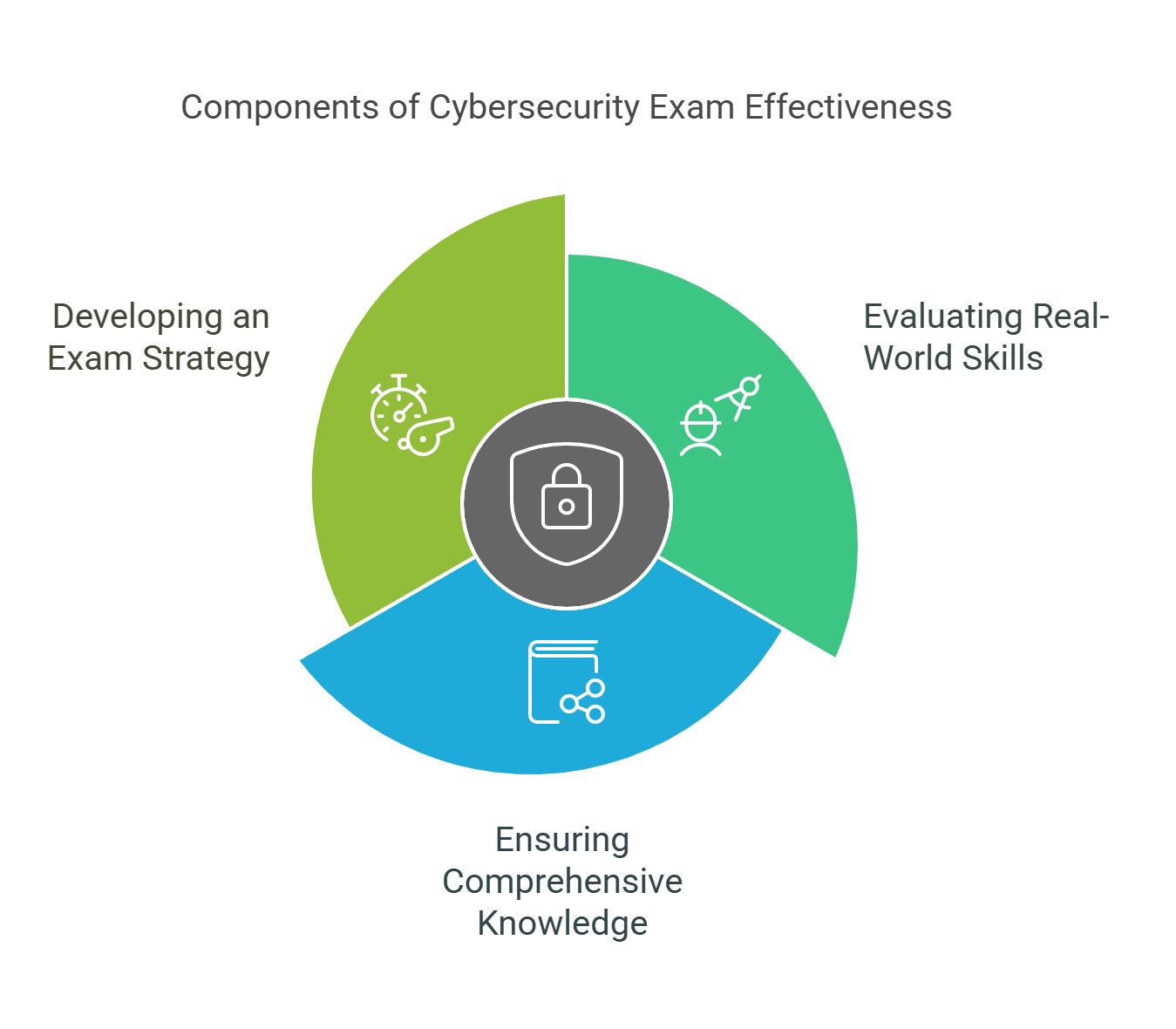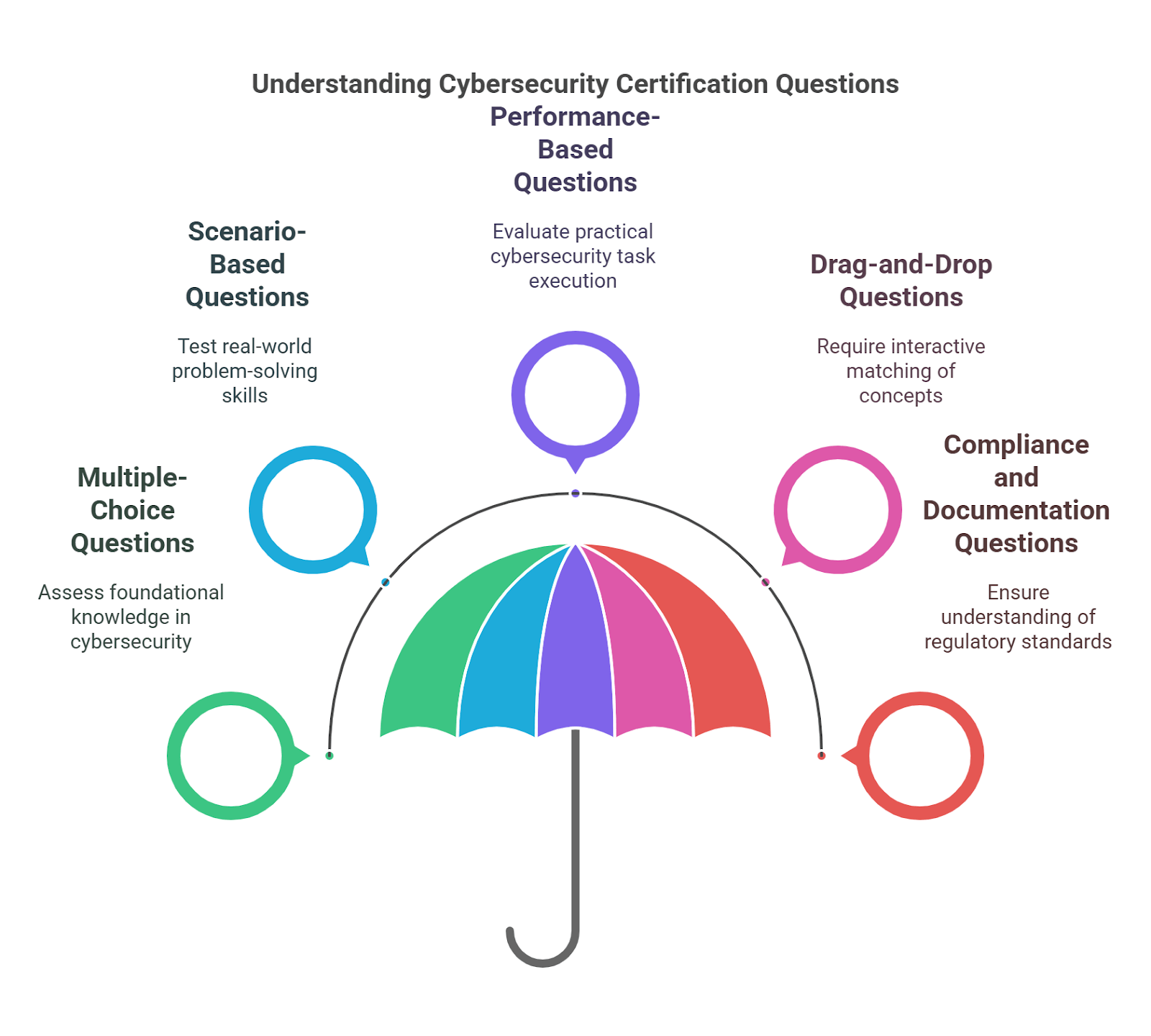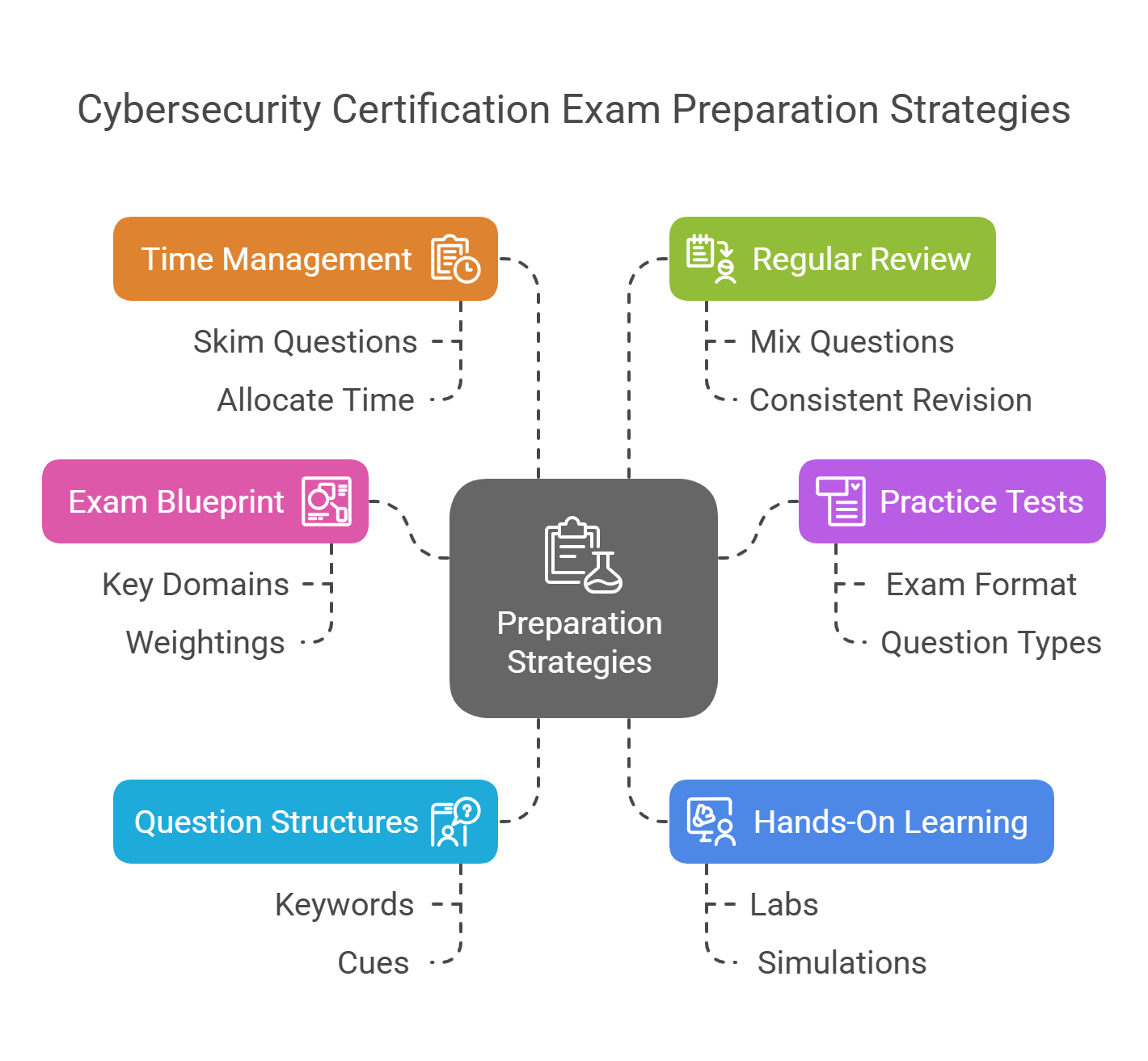Table of Contents
This section introduces the importance of cybersecurity certifications in building a career. It highlights that certifications are not just about studying; they also involve understanding the Google Cybersecurity Certification Questions and Answers that will appear on exams. The article emphasizes the significance of being prepared for various types of certification questions, ranging from basic network security concepts to complex, scenario-based problems.
Why Are Cybersecurity Certification Questions Important?
Cybersecurity certification questions are crucial because they assess both theoretical knowledge and practical expertise. These questions help ensure that professionals can handle real-world cybersecurity challenges. The exams are designed to simulate actual tasks a cybersecurity professional would face, such as mitigating security breaches and ensuring compliance with global standards. Understanding these questions helps candidates excel in high-pressure, dynamic environments.
What Makes These Questions Critical?
This section explains that cybersecurity exam questions are not just about testing knowledge but also about proving that the candidate has the necessary skills to succeed in the field. The questions are designed to reflect real-world problems, evaluating both theoretical understanding and practical ability. These questions ensure that professionals are ready to handle the fast-evolving landscape of cybersecurity challenges effectively.
-
Evaluating Real-World Skills Certification exams include scenario-based and simulation questions that require candidates to apply their knowledge to real-life situations. These types of questions test how well you can respond to dynamic cybersecurity threats, breach scenarios, and security issues. They mirror the situations you would encounter in an actual cybersecurity role, emphasizing the importance of decision-making and problem-solving.
-
Ensuring Comprehensive Knowledge Cybersecurity exams are designed to test a candidate's knowledge across various domains like cryptography, network security, compliance, and incident response. These certifications don’t only test individual topics but also assess your ability to integrate various aspects of cybersecurity into cohesive strategies. A deep understanding of the interrelationships between these topics is key to success in these exams.
-
Developing an Exam Strategy Developing a strategic approach to taking the exam is as important as mastering the subject matter. Understanding the exam structure, question formats, and time allocations allows you to maximize your performance. A well-thought-out strategy helps you manage tricky questions, allocate time efficiently, and stay calm during complex scenarios, increasing your chances of success.

Types of Cybersecurity Certification Questions
This section outlines the various types of questions you may encounter in Cybersecurity Certification Canada exams. Each exam uses different formats to evaluate the skills required for the role. Knowing the different question types helps candidates understand what to expect and how to prepare effectively.
-
Multiple-Choice Questions Multiple-choice questions are common in entry-level certifications like CompTIA Security+. These questions test basic concepts, definitions, and best practices in cybersecurity. They are designed to assess your general knowledge and understanding of the field. The questions are straightforward and often focus on foundational knowledge in security and risk management.
-
Scenario-Based Questions Advanced certifications like CISSP and CEH use scenario-based questions. These involve real-world cybersecurity problems where you must decide on the best course of action. These types of questions test your ability to analyze situations and apply your theoretical knowledge to solve complex, dynamic problems.
-
Performance-Based Questions Performance-based questions are found in hands-on certifications like OSCP. They test your practical ability to execute cybersecurity tasks in a virtual environment. These types of questions assess real-time problem-solving skills, requiring you to exploit vulnerabilities or complete penetration tests to prove your skills.
-
Drag-and-Drop Questions Drag-and-drop questions are interactive and are often included in exams like CompTIA. These require you to match concepts, processes, or security workflows. They test your ability to understand and organize cybersecurity knowledge, such as mapping out network security components or arranging processes in the correct order.
-
Compliance and Documentation Questions With increasing regulatory requirements like GDPR and PCI DSS, certification exams include questions related to compliance and documentation. These questions assess your knowledge of legal frameworks and regulatory standards, ensuring that you understand the importance of compliance in cybersecurity practices.

How to Prepare for Cybersecurity Certification Questions
Preparing for cybersecurity certification exams requires a combination of theoretical learning, practical application, and strategic planning. This section discusses different preparation methods that can help candidates succeed in their exams. From using exam blueprints to practicing with mock exams, each strategy aims to increase both knowledge and exam confidence.
-
Use the Exam Blueprint Review the official exam objectives and blueprints before studying. These documents outline the key domains covered in the exam and their respective weightings. By understanding what areas are emphasized, you can focus your preparation on the most critical topics, ensuring a targeted approach to studying.
-
Practice Tests and Mock Exams Practice tests are a great way to familiarize yourself with the exam format and question types. These tests simulate actual exam conditions and help identify areas where you need improvement. Regular practice with mock exams also builds confidence and reduces anxiety during the real exam.
-
Understand Question Structures Learning how to identify important keywords in questions can help you focus on the core of what is being asked. Phrases like "most likely" or "best practice" help you determine the best possible answer. Recognizing these cues allows you to navigate tricky questions and avoid overthinking.
-
Hands-On Learning Approach Hands-on labs and practical simulations are crucial for advanced certifications. Practical experience helps you bridge the gap between theoretical knowledge and real-world application. Platforms like ACSMI offer labs and exercises that simulate the type of tasks you would encounter in the field.
-
Time Management Time management is a critical skill during certification exams. Skim through the exam to tackle straightforward questions first, leaving the more complex ones for later. Managing time effectively ensures that you can finish the exam and allocate sufficient time for challenging sections.
-
Review and Revise Regularly Consistent review and revision are essential for retaining what you’ve learned. Mix up different types of questions during practice sessions to replicate the exam experience. Regular revision ensures that key concepts remain fresh in your mind and helps with recall during the actual exam.

Less Known Facts About Cybersecurity Certifications
This section highlights interesting and lesser-known facts about cybersecurity certifications, shedding light on aspects of the certification process that many may not be aware of. These facts can provide valuable insights for anyone preparing for these exams.
-
Many cybersecurity exams, such as CISSP, require candidates to have several years of professional experience in specific domains before qualifying to take the exam.
-
Scenario-based questions often simulate real-world cybersecurity crises, testing your ability to make quick decisions under pressure.
-
Hands-on exams like OSCP and CEH require you to demonstrate practical skills by performing tasks in virtual environments, which is a key part of the certification process.
-
In exams like CompTIA Security+, the difficulty of the questions can impact the passing score, making it different from traditional exams where a fixed passing mark is used.
-
Some certifications, such as CISM, require both exam success and a certain amount of work experience to be awarded the certification.
-
Cybersecurity certifications are regularly updated to reflect changes in technology, tools, and cybersecurity threats, ensuring that they remain relevant and practical.
Final Thoughts
Mastering cybersecurity certification questions is essential for advancing your career in the field. Understanding different question formats, preparing with mock exams, and gaining practical experience will help you perform well in exams. By focusing on a comprehensive preparation strategy, including ACSMI Certification, you’ll be ready for both the certification exam and the real-world challenges of the cybersecurity industry.
Frequently Asked Questions (FAQs)
What types of certifications involve performance-based questions?
Exams like OSCP and CEH are examples of certifications that include performance-based questions. These exams require candidates to solve practical problems in simulated environments.
Are there resources for practicing cybersecurity certification questions?
Yes, platforms like ACSMI, Coursera, and certification-specific study guides provide practice exams, mock questions, and hands-on labs to help candidates prepare.
How many cybersecurity certification questions should I practice?
The number of practice questions depends on the certification level. For entry-level exams like Security+, aim for 200-300 questions, while for advanced exams like CISSP, aim for 500-700 questions.
Do all cybersecurity certifications include scenario-based questions?
Not all certifications include scenario-based questions. These are more common in mid-to-advanced certifications like CISSP, CEH, and AWS Security.
How can ACSMI help me prepare for these questions?
ACSMI provides both theory-based questions and hands-on practical modules, helping you prepare for both theoretical exams and real-world challenges.

Leave a Reply